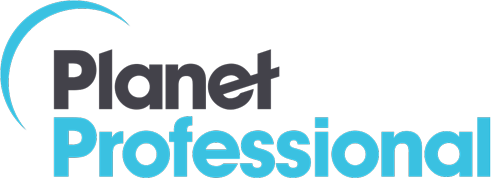Ten Ways to Optimize Your LinkedIn Profile to Fuel Your Job Search
If you are a contender for any new job, it’s safe to assume your LinkedIn profile will be reviewed as part of the initial screening process. And, even if you haven’t started applying but are open to new professional opportunities, there are ways LinkedIn can help you get noticed by the right people. Want to prepare for your next step professionally? Start by making sure you optimize your LinkedIn profile with these 10 attributes:
1. The right photo
A LinkedIn photo is one of the first and most important components of your LinkedIn profile. The wrong picture could mean a potential employer deciding not to connect with you. Make sure your picture is professional but approachable. Avoid selfies or images where someone else is clearly cut out of the picture. Be sure your outfit is polished and current, and don’t forget to smile! A would-be employer wants to be able to recognize you from the photo and feel like they are reaching out to someone they could envision working with. Photos that are too serious, too stuffy or outdated need to be replaced. Ask a photographer friend if they can take a few snapshots, or get it done professionally.
2. A complete profile
Complete as much of your LinkedIn profile as possible. It should contain all of the relevant information about your work experience and where you’re headed in your career. If you graduated within the past five years, beef up the education section with descriptions of courses, projects, honors and awards. Do you speak a second or third language? Add that skill to your profile, along with any certifications you’ve earned. According to LinkedIn’s Career Expert, Nicole Williams, “Your profile is 12 times more likely to be viewed by a hiring manager if you have a detailed list of work experience. The more robust your profile is, the more experienced and hirable you look.”
3. Projects and publications included
Did you create and implement a survey for your company, help design a process, or develop a new piece of technology? Projects that show you contributed to the betterment of your organization are attractive to employers because they demonstrate how you applied your skill set. Also, articles you co-authored, blogs you’ve written and media publications you’ve been quoted in should be added to the “Publications” section of your LinkedIn profile. They prove you are engaged in your industry or the industries you service and help differentiate yourself from other candidates.
4. You’re open to connecting
If you are an HR professional who is confidentially looking for a new job, mention in the “Summary” section that you are open to networking. Something like, “An HR professional with more than five years experience in operations and talent acquisition. I’m open to connecting with people who have similar career interests and can help me grow professionally.”
5. Clearly visible contact information
Make it easy for people to get a hold of you by including your preferred contact details in the “Edit Contact Info” or “Summary” section. Use a non-work email address and make sure it’s appropriate (unlike partyanimal14@ggggmail.com).
6. Context and stories
While keywords are important to include, don’t make it your sole mission. Pumping what you think are relevant keywords or big phrases into your profile won’t make the right impression – it will just make it seem forced. Instead, provide context. For example, how did your knowledge of ADP and Great Plains make the payroll process more efficient for your finance team?
7. Different than your resume
While your work experience and all relevant dates need to exactly match your resume, consider your LinkedIn profile as a supplementary marketing tool to your resume. It’s a chance for you to highlight your personality and the well-rounded “you” that you can’t fully show on your resume. What are your interests and hobbies? Do you own a patent? What are the causes and initiatives you care about? Where do you volunteer? What conferences have you attended? What publications have you written or been quoted in? Share these in the appropriate sections of your LinkedIn profile to show the whole you.
8. Appropriate activity settings
If you are connected to colleagues, your manager, or anyone tied to your current employer who doesn’t know you’re looking, adjust your privacy settings so that LinkedIn will NOT notify the people in your network that you’ve updated your profile – a signal to many that you may be looking for a new job.
9. Authenticity
LinkedIn is a great tool to sell yourself and tell your career story. What makes you good at what you do? What gets you out of bed in the morning? Don’t be afraid to summarize how your interest in sports statistics transformed into a career in market research. Or, bake your personality into your headline and get creative, for example, “Data scientist and secret agent at XYZ company.” Start there and the rest will come.
LinkedIn is just as important as your resume when it comes to marketing yourself to potential employers. Be proactive about selling the “whole” you with these 10 tactical suggestions, and you will open yourself up to new professional opportunities.
10. Content sharing
With the exception of your summary, LinkedIn shows your activity before all other sections, including your experience and education. That means every like, comment, post or article can be seen by people viewing your profile. Make sure to optimize your LinkedIn profile by keeping this section robust and current through sharing content, providing thoughtful comments on the posts of your contacts and liking articles related to your field.
Photo credit: Unsplash
Career advice | Finding a job | Job search advice | Personal branding



